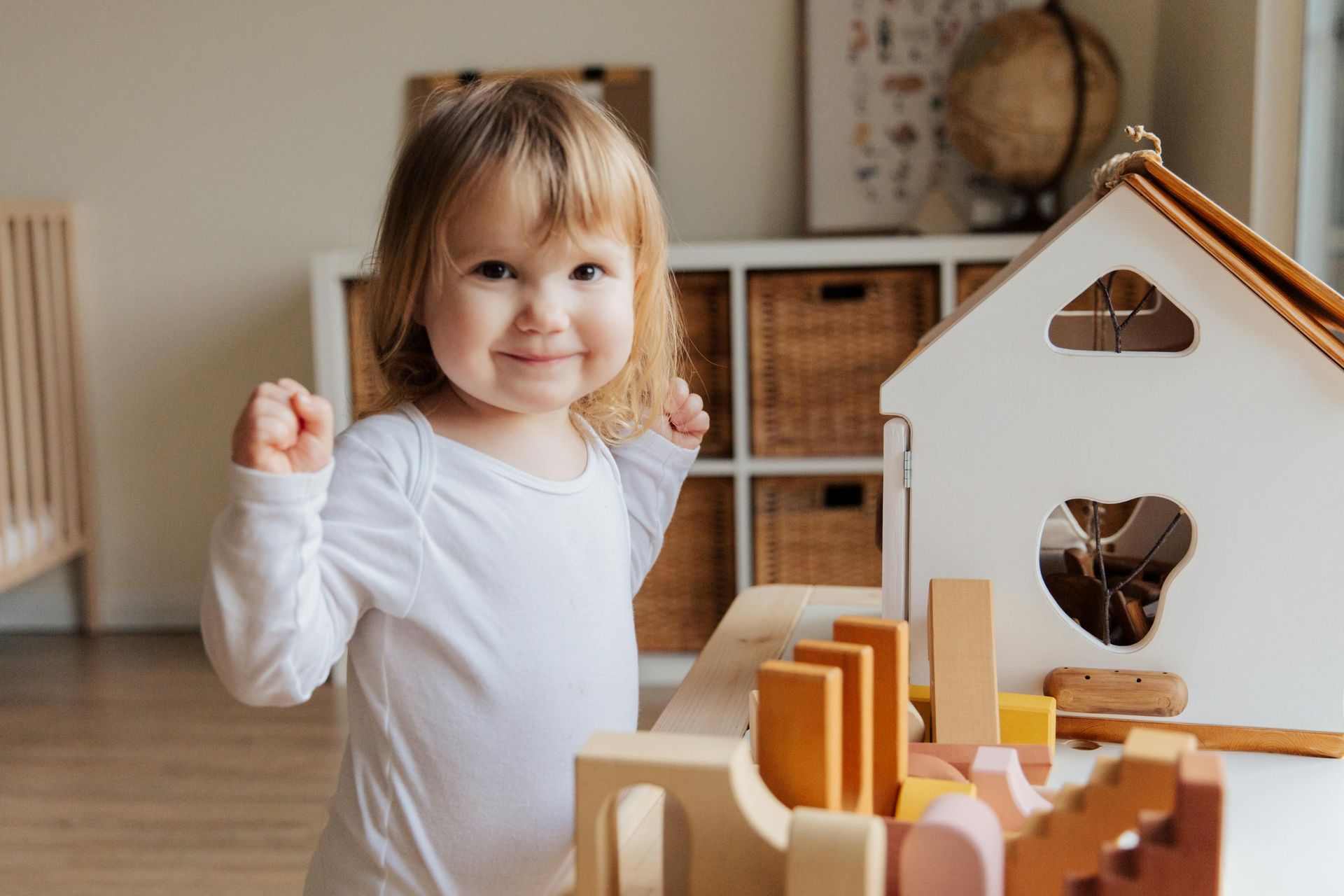PRESCHOOL CHILD (3 YEARS AND OLDER)
- When a child attains a weight of 40 pounds and your child’s ears have reached the top of the car seat, a booster seat may be used. When a child reaches a height of 4 feet 9 inches regular seat belts may be used. Even after your child has outgrown the child car safety seat, if at all possible, continue to avoid placing your child in an automobile seat which is equipped with an air bag. Air bags are designed for adults and are very dangerous for small children. Minor traffic accidents which result in the deployment of air bags have been known to kill small children in accidents that otherwise would have had no injuries. Children should not sit in the front seat until they are 13 years old. Our car seat recommendations can be found here.
- Children should not ride on motorized machinery with parents. These include lawn tractors, lawn mowers, all-terrain vehicles, farm vehicles, industrial equipment and other like machinery. Severe injury may result.
- Keep knives and other sharp objects out of reach.
- Teach your child the danger of following a ball or an animal into the street, but do not depend upon your child remembering such instructions. The child playing near the street should be closely supervised.
- Advise your child to be careful around and to avoid strange dogs, cats and other animals. Strive to provide protection for your child from animal bites. Significant animal bites are a particularly bothersome problem at this age. Even known pets at home can also pose danger to children from bites. If your child is bitten by an animal, consult the section on bites in this handbook.
- Even though your child may know how to swim, he or she is not “water safe” at this age. Close supervision while swimming is a must. It is a good idea to begin to teach your child to swim at this age. Swimming pools should be completely enclosed with a fence and a gate which closes automatically. Swimming pool alarms are also a good idea.
- Your child should be taught what to do in case of a fire in the home. It is a good idea to have a “fire drill” to prepare for the possibility of a fire in your home. For bedrooms in two story homes, rope ladders can be purchased and stored in an accessible place for use in case of fire.
- Your child’s vision should be tested before starting school at 5 years of age. If at any age a child develops the following then you should bring them in for a vision check up: eyes that turn inward (crossing) or outward, squinting, headaches, not doing as well in school work as before, blurred or double vision, discharge from the eyes or red eyes.
- Speech and hearing should also be something of which you take notice. If your child has a poor response to noise or voice, has slow language or speech development, or abnormal sounding speech you should come into our office for an office visit to address the situation.
- Build healthy life-style habits: Establishing healthy lifestyle habits early is crucial for maintaining normal blood pressure, weight, and glucose metabolism in children. Blood pressure should be monitored regularly starting at age three. Encourage lifestyles that limit salt intake, maintain a healthy weight, and avoid sugary foods such as soda and candy. Promote regular exercise to help keep your child’s blood pressure and weight in check. It’s also important to limit snacking, as snacks are often high in carbohydrates with little nutritional value, leading to excess calorie intake and potential obesity. The habits you instill now can last a lifetime. Obesity and hypertension are serious health risks, but they can be mitigated with the right diet and exercise. For more information, refer to the section on obesity in this handbook.
- The use of trampolines is quite dangerous for children. Their use should be avoided. If you choose to use one anyway, make sure a perimeter safety net is attached to the trampoline. Trampoline parks regularly send kids to the hospital with significant orthopedic injuries. These establishments have you sign waivers of liabilities for very good reason.
- Your child should be taught their name, parents’ names, address, and telephone number. Additionally, they should understand not to go with strangers or accept food or candy from them. It’s important to have a plan for what they should do if they get separated from you. Here are a few pointers:
- Teach your child your real first and last names (not just “Mommy” and “Daddy”).
- Explain how to identify "safe adults" to ask for help, such as police officers or mothers with children.
- Discuss frequently what to do if they get lost and practice role-playing scenarios that your child should do if they become lost.
- Have them memorize and practice dialing your phone number without any prompts from you. By reinforcing these important safety measures, you can help ensure your child is better prepared in case they ever find themselves lost and alone.
- Other safety approaches mentioned earlier life firearm safety still apply to this age.


